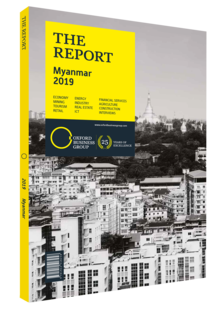Fred Hess, Managing Director, PanAust: Interview

Interview: Fred Hess
How have changes to the legal framework affected levels of foreign direct investment (FDI)?
FRED HESS: While it is difficult to draw any linkages between the recent changes to legislation and FDI in general, recent changes to the legal framework are encouraging as are the efforts of the Ministry of Natural Resources and Environmental Conservation (MNREC) to effectively implement new mining rules. There is a long way to go, but steps taken so far have been positive. While there will be challenges, particularly with coordinating issuing of different licences by the Union Government and the sub-national authorities, we see the start of the new permit regime as an important step. The new rules bring m ore certainty – which most foreign companies value – such as the so-called “right to mine” if and when companies make major discoveries. Tenement sizes of up to 2100 sq km are possible. As long as the rules are implemented so that companies really can acquire such areas, this is good. As for the length of tenure, companies are now able to hold integrated permits for prospecting, exploration and feasibility studies of up to 12 years by using all available extensions. Previously, the maximum allotted time was nine years. Now there is the possibility of fiscal arrangements for production which does not include production sharing.
Given the state’s limited oversight capacity and a high degree of business informality, will the new rules suffice to ensure sustainable development?
HESS: Ultimately, sustainability is driven by investors, along with regulations that incentivise positive outcomes. The new rules put in place go further in attracting high-quality investors who seek to do the right thing by their host communities and the environment.
Going beyond the rules, though, it is crucial that government departments responsible for oversight, particularly the MNREC, understand the mining business and in particular, mining pipelines. This will provide the right regulatory setting to strike a balance between attracting investment and ensuring sustainability during the mining cycle, from exploration, where impact is minimal, through to production and ultimately, closure.
Continuous communication and collaboration between the industry and the government’s regulatory bodies is essential in building this capacity. The new rules are a step in the right direction, but the continuous collaboration between government and industry will ensure sustainable development, and the government is moving in this direction. Recently, there has been much discussion between the government and companies on various topics, including permitting processes and fiscal terms for mining contracts. If this trend continues, we could eventually see some positive outcomes.
What can the state do to help foreign investors with regard to legal processing, and the provision of transparent and sufficient information?
HESS: With regard to bureaucratic processes, there is a degree of relative complexity that can take companies a long time to negotiate. However, if companies make the effort to explain the nature of their businesses and demonstrate a commitment to the process, the authorities are willing to listen. Therefore, we are hopeful that the government, in consultation with investors, will be able to identify inefficient and unnecessary procedures and make efforts to improve them.
With regard to information, there is not much geological survey data available to support investors’ decision-making. They come because of the promise of overall geological prospectivity, not necessarily because of a surplus of extant data. The government could generate higher-quality geological data to prioritise exploration and create a policy environment in which investors feel welcome. We also see that the government is moving rapidly towards the implementation of a mining cadastre, which will supply investors with better information about tenement ownership and make it easier for them to select areas in which to apply.
You have reached the limit of premium articles you can view for free.
Choose from the options below to purchase print or digital editions of our Reports. You can also purchase a website subscription giving you unlimited access to all of our Reports online for 12 months.
If you have already purchased this Report or have a website subscription, please login to continue.

